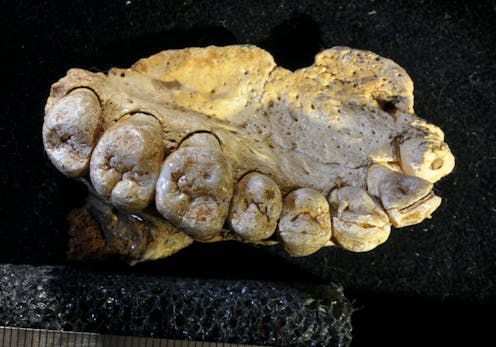
Recent research has revealed that the commonly used technique of micro-computerised tomography (micro-CT) might inadvertently damage fossil specimens, challenging its reputation as a non-destructive method of study. Published in the journal Radiocarbon, the study highlights concerns regarding the preservation of fossils, which serve as crucial records of ancient life and environments.
Fossils, often millions of years old, provide essential insights into the evolution of species, including human ancestors. With the potential to uncover information about dietary habits and migration patterns, these ancient remains are invaluable to scientists. Micro-CT has long been favoured for its ability to create high-resolution, three-dimensional images of fossils without the need for physical alteration. This technique allows researchers to study the internal structures of fossils while maintaining their integrity.
Despite its benefits, the recent study indicates that micro-CT scanning may not be as harmless as previously thought. Researchers, including Mathieu Duval from the Spanish State Research Agency, conducted experiments using standard micro-CT settings on a variety of modern and fossil bone samples. They measured collagen levels before and after scanning, as collagen is vital for various analyses, including radiocarbon dating and dietary assessments.
The findings revealed a concerning decrease in collagen content, with scanned samples showing approximately 35% less collagen than their unscanned counterparts. While the radiocarbon dating of fossils remained unaffected, the loss of collagen could render some specimens unsuitable for further analytical techniques. This research emphasizes the need for caution when employing micro-CT scanning, as it may significantly alter the very information scientists seek to uncover.
Micro-CT Imaging: Advantages and Risks
Micro-CT operates similarly to medical CT scans but at a much finer scale, offering detailed images without causing visible damage. This approach has been instrumental in palaeontology, allowing for the virtual sharing of fossil data among researchers globally. However, the study raises critical questions about the long-term effects of X-ray exposure on fossil preservation.
X-rays, while useful in medical applications, are a form of ionising radiation that can damage living tissues. Although traditional use in medicine involves strict controls to minimize risks, the impact of X-rays on fossils had not been thoroughly investigated until now. The study’s results suggest that even minimal exposure during scanning could compromise the integrity of these ancient specimens.
In a previous study, Duval’s team noted that micro-CT could artificially “age” fossils when dated using electron spin resonance, a technique for determining ages beyond the capabilities of radiocarbon dating. Combined with the current findings, this suggests that micro-CT scanning may lead to irreversible changes in fossils, further complicating the preservation process.
Future Implications for Fossil Research
The implications of this research are significant for the fields of palaeontology and palaeoanthropology. While micro-CT remains a valuable tool for studying ancient life, the findings advocate for more judicious use of the technology. Researchers are encouraged to limit fossil exposure to X-rays and develop strategies to share data effectively, reducing the need for repeated scans.
As the scientific community grapples with these revelations, it is clear that a balance must be struck between the benefits of advanced imaging techniques and the preservation of precious fossil specimens. The study serves as a crucial reminder that even widely accepted methods may carry unforeseen consequences, and continued vigilance is necessary in the pursuit of understanding our planet’s history.
In light of these findings, it is imperative for researchers to reassess the application of micro-CT imaging in fossil studies. Future guidelines may need to address the potential impacts on fossil integrity, ensuring that these invaluable resources remain intact for generations to come.






